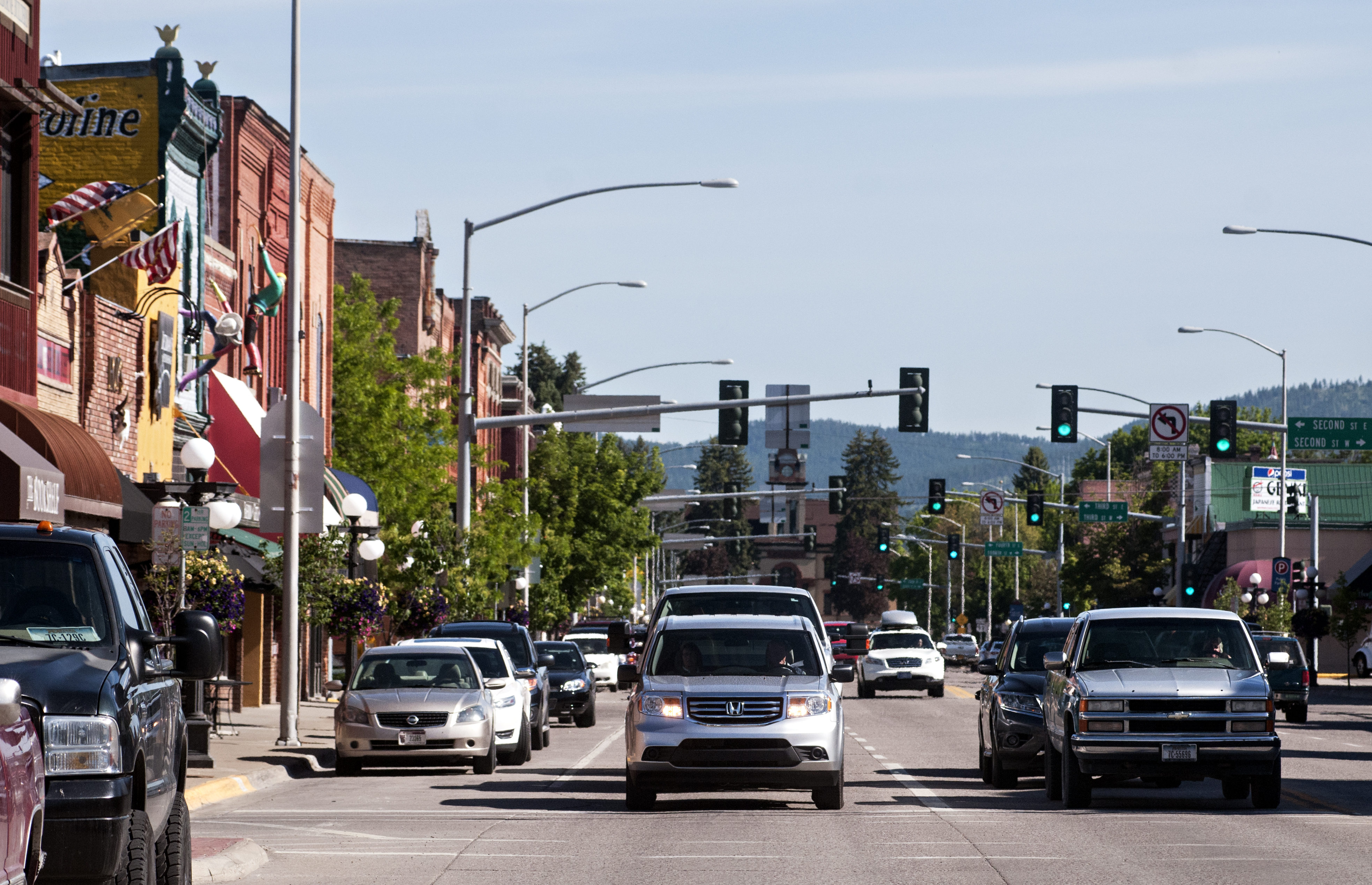The Kalispell City Council has approved the creation of a new and expanded business improvement district that will collect assessments from property owners to promote the historic heart of the city.
After months of discussion and debate, the council on April 3 voted 6-2 to approve a resolution establishing the new district for 10 years. Mayor Mark Johnson voted in support along with councilors Phil Guiffrida, Kari Gabriel, Rod Kuntz, Sandy Carlson and Jim Atkinson. Councilors Tim Kluesner and Chad Graham were opposed and Wayne Saverud abstained from voting because he said he owns property within the district.
The new BID will replace the existing district, which is expiring, and expand the previous boundaries to add 82 new property owners and 110 new properties, hiking the total to 246 properties owned by 181 individuals. Leading up to the proposed creation of the new district, BID staff collected 104 signatures of support from downtown property owners, equaling 64 percent of the total amount in the district and surpassing the required 60 percent threshold defined by state law.
The city accepted public protests from property owners who were opposed, and the final tally showed 12.87 percent of the total taxable valuation of property within the new district was opposed and 10.67 percent of property owners. Of the total projected assessments for property within the new district, 12.27 percent stood opposed. An analysis of properties for and against the expanded district showed opposition mostly lies on the outskirts away from Main Street.
The BID collects fees using a formula that tallies a property’s current taxable value multiplied by 0.0375 plus property square footage multiplied by 0.015. According to an analysis of BID collections from 2016, the average contribution was $520.05.
Under the expansion, the boundaries will extend out from Main Street west and east as far as Third Avenues West and East, and from Eight Street West near the Flathead County Courthouse north to Idaho Street, encompassing all commercial establishments.
Faced with opposition from some property owners who did not want to be part of the expanded boundaries, the council has devoted multiple meetings to debating the merits of the district and the process for creating a new BID. Many councilors scrutinized the state law that outlines requirements for establishing a district, but just as many saw the benefits of creating a district with majority support from effected property owners.
Guiffrida said the council followed the proper vetting process before reaching its decision and that future BID requests for budget items and other actions will remain under scrutiny by the city. Guiffrida and others also took an opportunity to quell previous allegations of misdeeds by BID staff.
“I found no areas of significant concern. That’s not saying everything is perfect. There’s areas of improvement, absolutely, but do I believe there were shenanigans? No,” Guiffrida said.
Johnson also thanks Pam Carbonari, the former mayor of Kalispell who has served as the organization’s part-time coordinator since 2010, for her service and work in the downtown area promoting growth and stability.
A business improvement district is an entity that collects varying amounts of money from property owners within its boundaries, and those funds are redirected into the district to fund efforts that include beautification, downtown events, marketing and façade improvements.
Since it was first established in 2004, the Kalispell BID has facilitated almost $200,000 in public and private investment on façade improvements in downtown. Along with the grant program, the BID sponsors and assists with downtown events, such as Thursday!Fest, Taste of Kalispell, and the annual Art Walk and Holiday Stroll. It also funds an “ambassador” who cleans sidewalks, waters flowers and conducts other regular duties to keep downtown appealing.
Critics say downtown property owners — not the BID — should be responsible for maintaining quality standards through their own reinvestments.
“Going through and telling someone they benefit from something is speculation,” Graham said, agreeing with opponents who said they did not need the efforts of the BID to help their business.
